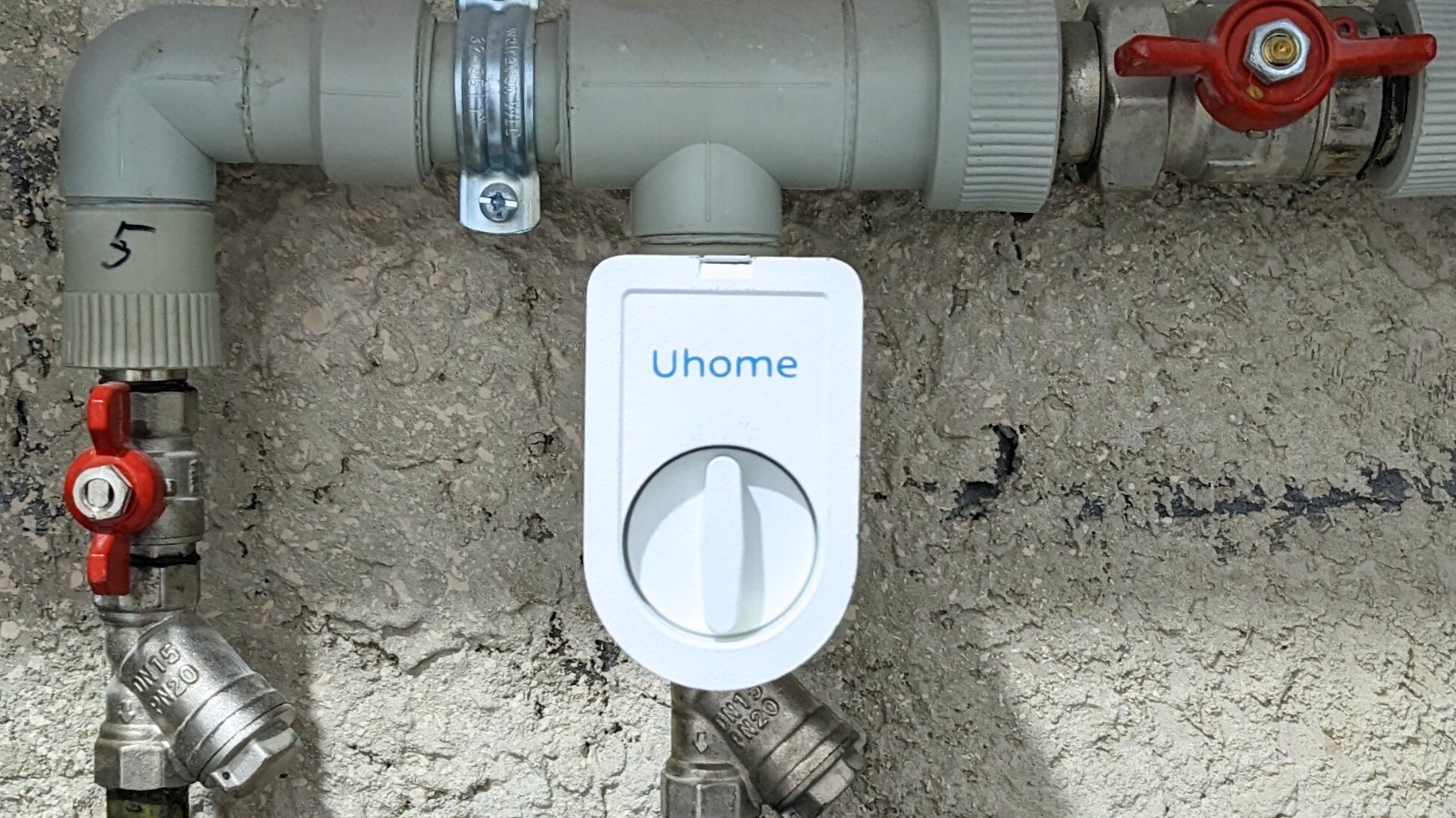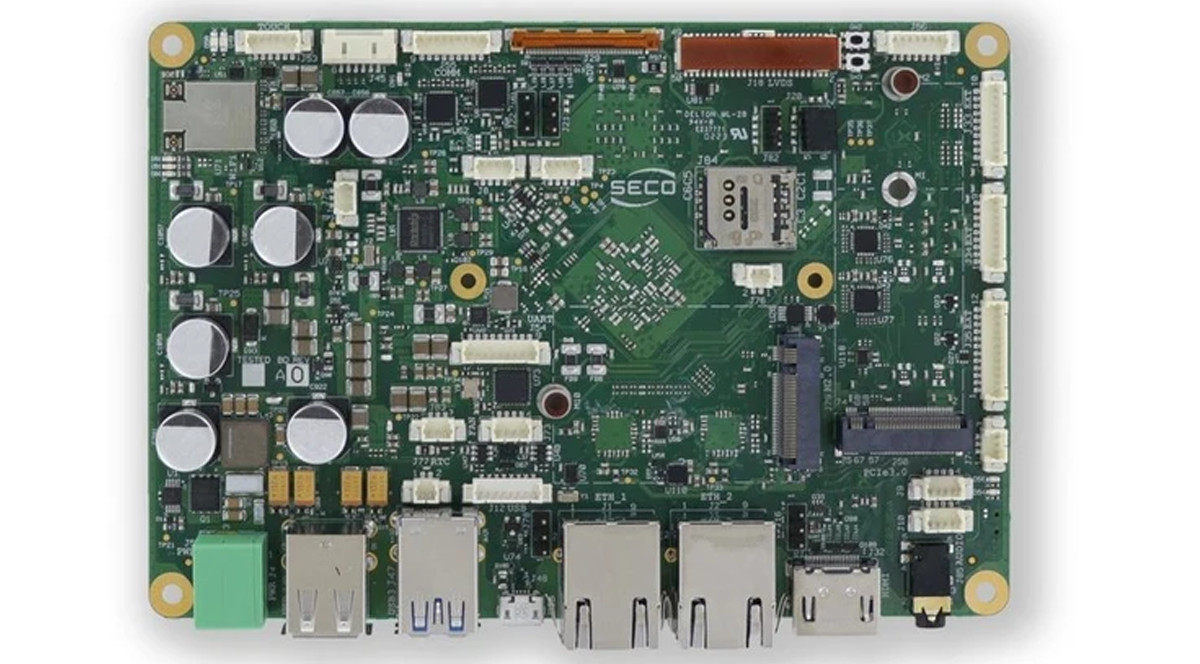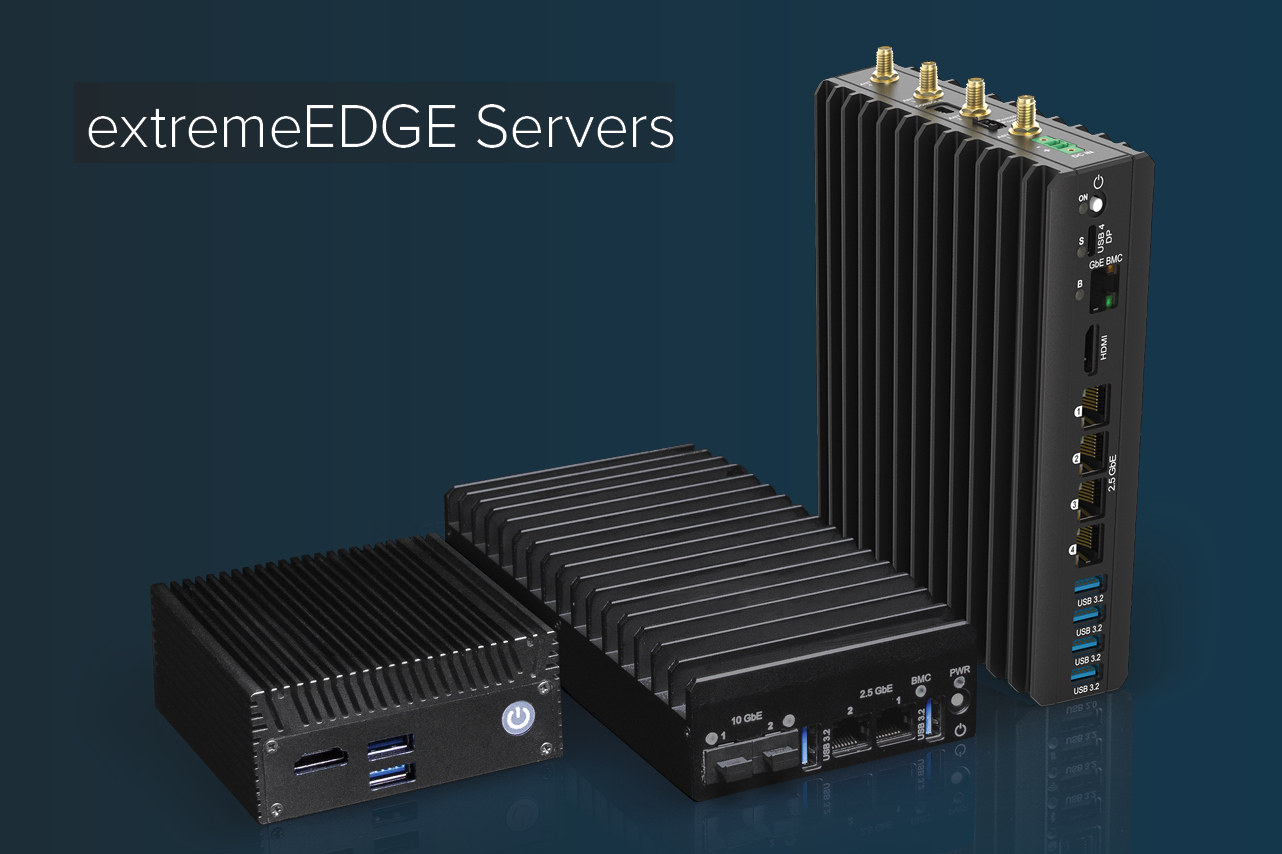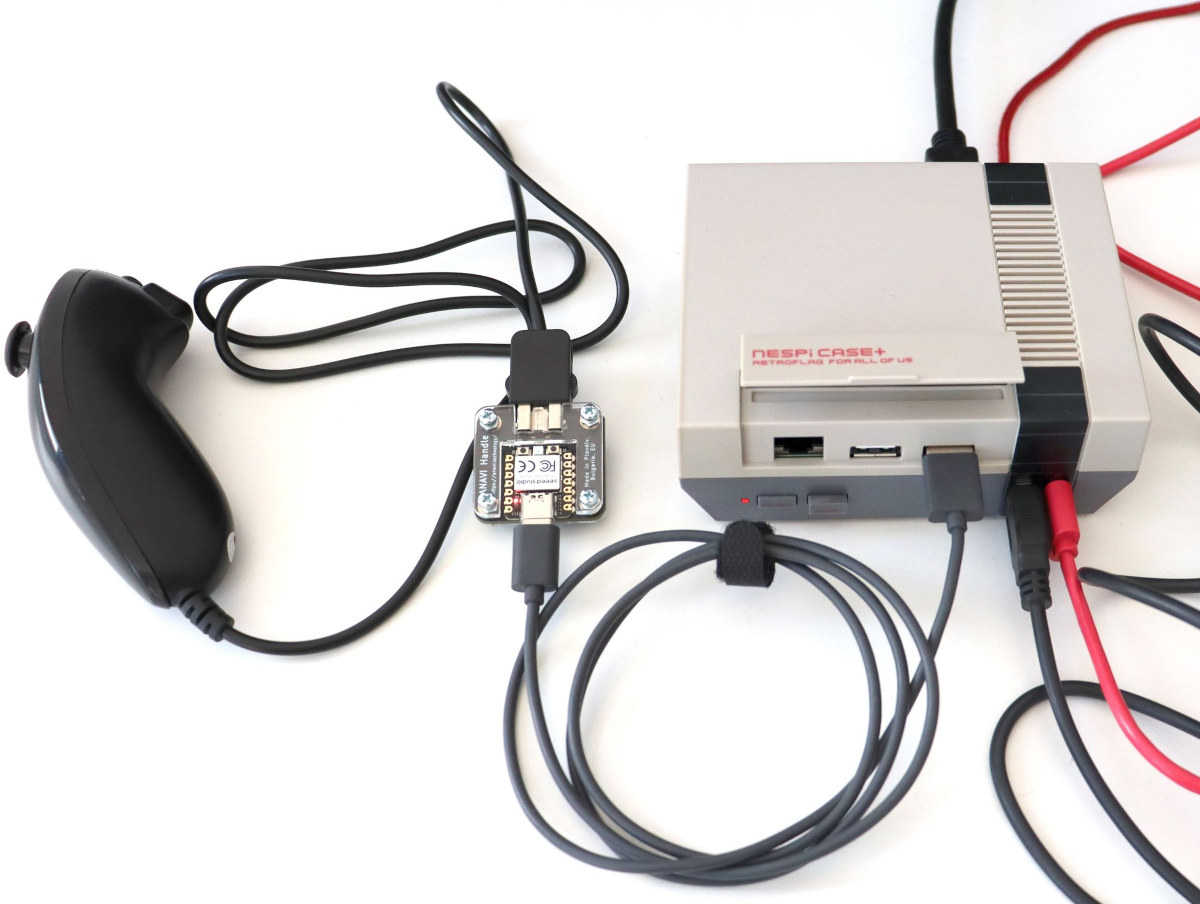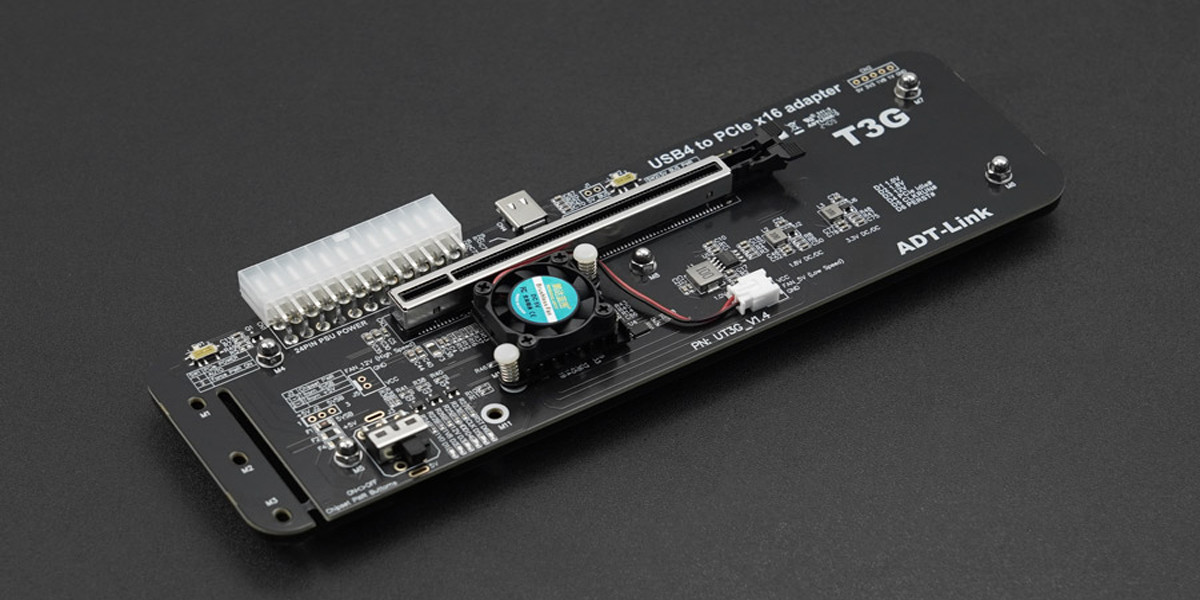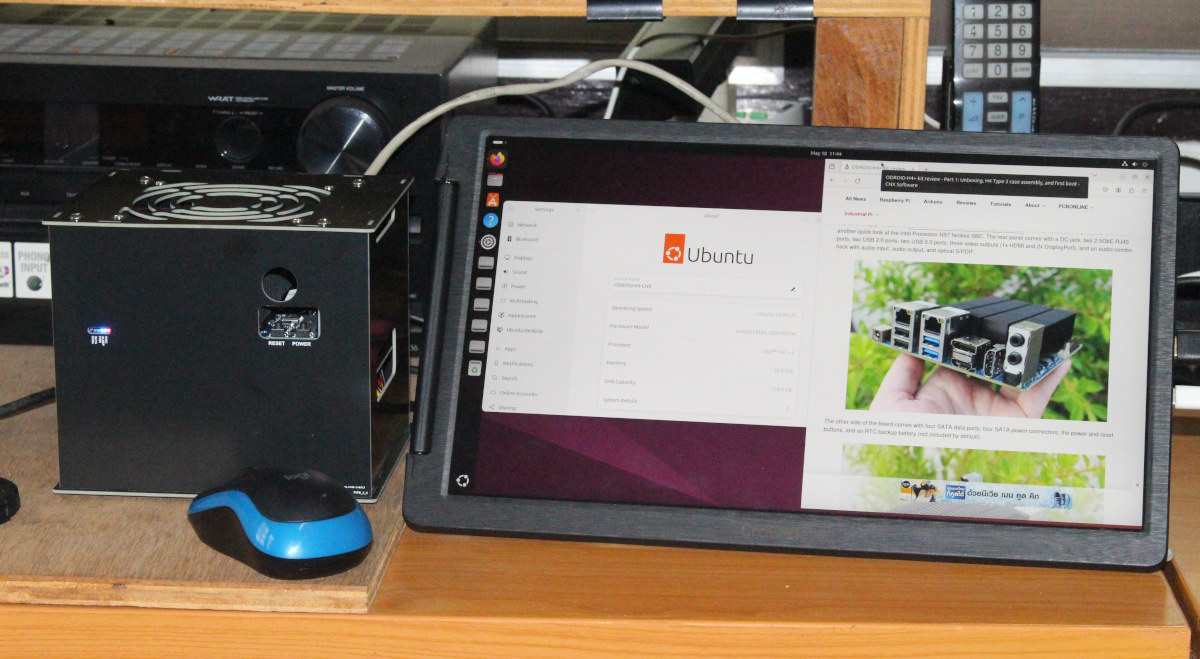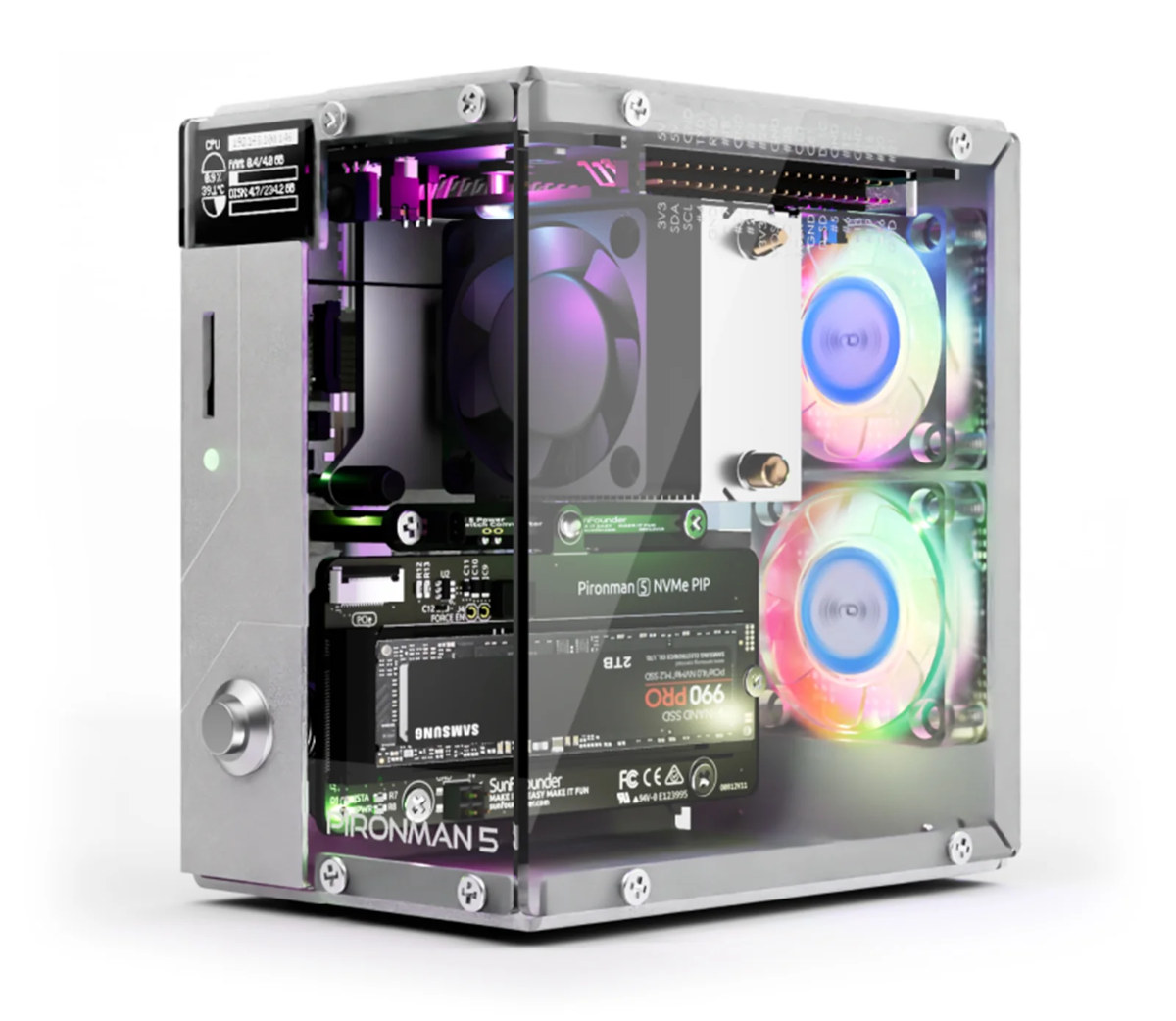True Wireless Valve from Uhome Systems is a battery-powered, smart valve that is easy to install and integrate into your smart home setup. It is based on the Nordic Semiconductor nRF52840, a multiprotocol Bluetooth 5.4 SoC with support for Bluetooth Low Energy, Bluetooth mesh, Thread, NFC, and Zigbee. True Wireless Valve can run on four AAA batteries for up to two years and can also be powered via a USB Type-C power supply. It offers a completely wireless experience with the option for battery power which removes the need for additional wiring and makes installation easier and safer. It seamlessly integrates with Home Assistant and other smart home platforms via ZHA and Zigbee2MQTT. It can be paired with a leak detector such as the AquaPing and used to respond automatically to potential leaks in the home. True Wireless Valve specifications: SoC – Nordic Semiconductor nRF52840 CPU – 32-bit Cortex-M4 core […]
SECO SBC-3.5-RK3568 – A Rockchip RK3568 3.5-inch SBC with dual gigabit Ethernet
SECO SBC-3.5-RK3568 is a feature-rich 3.5-inch SBC powered by a Rockchip RK3568 quad-core Cortex-A55 AI SoC which includes up to 4GB DDR4-3200 memory, 64GB eMMC 5.1 flash, three display interfaces (HDMI, LVDS, eDP), dual gigabit Ethernet, and various expansion headers for industrial applications. Additionally, it also features, Wi-Fi 802.11 a/b/g/n/ac, Bluetooth 5.0, and LTE support via M.2. USB connectivity includes two USB 3.0 Type-A, and multiple USB 2.0 ports with OTG, alongside RS-232, RS-422, RS-485, and TTL UART ports and more. Previously we have written about similar SBCs powered by the Rockchip RK3568 SoC like the AAEON RICO-3568, the RK3568 Tinker Board 3N, the Radxa ROCK 3B and many others feel free to check those out if you are interested in the topic. SECO SBC-3.5-RK3568 Specifications: SoC – Rockchip RK3568 CPU – Quad-core Cortex A55 processor at up to 2.0 GHz GPU – Mali G52 GPU with support for OpenGL ES 1.1/2.0/3.2, […]
Simply NUC extremeEDGE fanless edge computing servers are powered by Intel Celeron N5105 up to AMD Ryzen 7 Pro 8840U CPUs
Simply NUC has unveiled the extremeEDGE fanless servers designed with edge computing with a wide range of processors starting with an Intel Celeron N5105 and going up to an AMD Ryzen 7 Pro 8840U SoCs with options for Intel Processor N100 and AMD Ryzen Embedded CPUs. All models feature a NANO-BMC (Baseboard Management Controller) for out-of-band management in a small form factor to monitor, control, and manage hardware health and performance, and come with at least two 2.5GbE ports for networking. The top-end edgeExtreme 3000 series can operate in the industrial-grade -40 to +85°C temperature range, and offers extra features such as 10GbE, up to 96GB RAM, multiple USB 3.2 ports, and more. The extremeEDGE lineup offers three series, and eight models, designed to meet specific needs: extremeEDGE 1000 Series for Edge applications such as IoT gateways EE-1000 Series – Intel Celeron N5105 with up to 32 GB RAM, up […]
Use your Nintendo Wii Nunchuk as a USB controller with ANAVI Handle open-source hardware adapter (Crowdfunding)
Leon ANAVI has launched another open-source hardware project with the ANAVI Handle that transforms the Nintendo Wii Nunchuck into a USB controller meaning the Wii controller can now be used with any common hardware such as computers, laptops, single board computers, retro-gaming consoles, and so on. The ANAVI Handle is built around the Seeed Studio XIAO RP2040 module based on Raspberry Pi RP2040 microcontroller and converts the Wii Nunchuck with a custom port carrying I2C signals into a standard USB HID device that works without any extra drivers. ANAVI Handle specifications: MCU module – XIAO RP2040 MCU – Raspberry Pi RP2040 dual-core Cortex-M0 processor at 133MHz and 264kB RAM. Storage – 2MB SPI flash USB – 1x USB type C port for power and data Misc – Reset button, boot button, some LEDs PCB Nunchuck connector with I2C signal Dimensions – 35.0 x 33.3 mm OSHWA certification – BG000134 ANAVI […]
ADT-Link UT3G USB4 to PCIe adapter can drive NVIDIA or AMD graphics cards
DFrobot has recently listed the ADT-Link UT3G USB4 to PCIe x16 eGPU adapter featuring a PCIe Gen 4.0 x4 slot with 40 Gbps of bandwidth on their website. The module not only supports USB4, but it’s also compatible with Thunderbolt 3 and Thunderbolt 4 standards, meaning it can work with SBCs and mini PCs like the LattePanda Mu, V600 Alder Lake Mini PC, GEEKOM A7, and many others. The converter is based on ASMedia ASM2464PD USB4 /Thunderbolt to PCIe accessory controller and features a 24-pin ATX connector for power and a USB-C (TB3/TB4/USB4) interface, as well as two switches and a jumper to set some additional things. ADT-Link UT3G USB to PCIe Adapter Specifications Chip – ASMedia ASM2464PD USB4 /Thunderbolt to PCIe Accessory controller Type-C interface specifications Compatible with USB4, Thunderbolt 3, Thunderbolt 4 Bandwidth – 40Gbps PCIe interface Card slot: PCIe x16 Speed bandwidth: PCIe 4.0 x4 Supported GPU […]
ODROID-H4 Plus review – Part 2: Intel N97 NAS Kit and fanless SBC tested in Ubuntu 24.04
In the first part of the ODROID-H4+ kit review, I checked out the hardware and showed how to install the Intel N97 SBC into the H4 Type 3 case taking up to four 2.5-inch SATA drives. I’ve now had time to test the ODROID-H4 Plus with Ubuntu 24.04 both as an actively cooled NAS kit and a fanless SBC and will report benchmark results, 2.5GbE and storage test results, 4K and 8K YouTube video playback capability, check IBECC memory support, measure power consumption, and more in the second part of the review. Ubuntu 24.04 installation on ODROID-H4 Plus The ODROID-H4 Plus SBC does not come with any preinstalled OS since there’s no storage by default, so I installed Ubuntu 24.04 on the 128GB M.2 NVMe SSD I inserted into the board. The installation went relatively smoothly, but in hindsight, I would have probably installed the OS before installing the SBC […]
Beyond the mini PC – Customizable computing solutions for any industry (Sponsored)
In today’s fast-paced business world, the demand for efficient, customizable, and powerful computing solutions has never been greater. According to a 2022 report by Grand View Research, the global market for custom-built PCs is expected to grow at a compound annual growth rate (CAGR) of 14.5% from 2021 to 2028, driven by increasing demand for tailored computing solutions across various industries. Companies are turning to personalized technology to optimize processes and gain a competitive advantage. Therefore, when a company needs hardware specifically designed for their business, Azulle delivers. Azulle provides enterprise-grade mini PCs tailored to your business’s unique requirements through component enhancements, OEM, ODM, and more. Performance and Flexibility with Modular Design The right hardware for your business can boost efficiency and performance. Modular mini PCs are small computing devices that prioritize flexibility and customization allowing users to upgrade parts without replacing the whole unit, increasing the longevity and scalability […]
Pironman 5 is a fancy tower PC case for the Raspberry Pi 5 with NVMe M.2 SSD, oversized fans, RGB LEDs
SunFounder Pironman 5 is an enclosure for the Raspberry Pi 5 SBC that looks like a small Tower PC equipped with two RGB LED fans and a tower cooler with a PWM fan for cooling, and support for an NVMe SSD drive through the company’s Pironman 5 NVMe PiP HAT+ expansion board. The case also includes a small OLED information display, a power button for safe shutdown, two full-size HDMI ports, a spring-loaded microSD card socket for easy insertion and removal, an IR receiver for media center applications, and externally accessible 40-pin GPIO header so users can still play with GPIO while the Raspberry Pi 5 is inside the case. Pironman 5 key features and specifications: Designed for the Raspberry Pi 5 SBC (a board like Radxa Rock 5C could be installed instead, but software for OLED display, RGB LEDs, fan control, etc… might be an issue) Storage Pironman 5 […]


